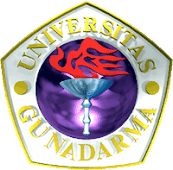8MEH-R6BFE-HWUHF-DPNDA-VFUWX-2EMBR-ACED
8MEH-RXYFD-JUV72-8922R-FTBZ6-QEMBR-ACED
8MEH-RFR8J-PTS8Q-92ATA-ORC6Q-JEMBR-ACED
8MEH-RS47Y-82HT8-GONVA-BCCCZ-DEMBR-ACED
8MEH-RXYFD-JUV72-8922R-FTDO8-QEMBR-ACED
8MEH-RGM33-K474L-6FGRR-8QEFN-UEMBR-ACED
Pilih salah satu..copy paste di AVG 2011 Internet Security
skip to main |
skip to sidebar
BHIM ISLAND
Chord Gitar, Tips musik and many more information
language
Facebook Badge
Instrument
Anda pengunjung ke-
GuestBook
Calendars
Final Exam CCNA 1 Chapter 8
Diposting oleh
Abhee
on Sabtu, 14 Juli 2012
Label:
Cisco CCNA
/
Comments: (0)
1. Which type of cable run is most often associated with fiber-optic cable?
backbone cable
horizontal cable
patch cable
work area cable
2. In most business LANs, which connector is used with twisted-pair networking cable?
BNC
RJ-11
RJ-45
Type F
3. When is a straight-through cable used in a network?
when connecting a router through the console port
when connecting one switch to another switch
when connecting a host to a switch
when connecting a router to another router
4. With the use of unshielded twisted-pair copper wire in a network, what causes crosstalk within the cable pairs?
the magnetic field around the adjacent pairs of wire
the use of braided wire to shield the adjacent wire pairs
the reflection of the electrical wave back from the far end of the cable
the collision caused by two nodes trying to use the media simultaneously
5. Which OSI layer is responsible for binary transmission, cable specification, and physical aspects of network communication?
Presentation
Transport
Data Link
Physical
6. An installed fiber run can be checked for faults, integrity, and the performance of the media by using what device?
light injector
OTDR
TDR
multimeter
7. XYZ Company is installing new cable runs on their data network. What two types of cable would most commonly be used for new runs? (Choose two.)
coax
Cat4 UTP
Cat5 UTP
Cat6 UTP
STP
8. What is a possible effect of improperly applying a connector to a network cable?
Data will be forwarded to the wrong node.
Data transmitted through that cable may experience signal loss.
An improper signaling method will be implemented for data transmitted on that cable.
The encoding method for data sent on that cable will change to compensate for the improper connection.
9. What are three measures of data transfer? (Choose three.)
goodput
frequency
amplitude
throughput
crosstalk
bandwidth
10.
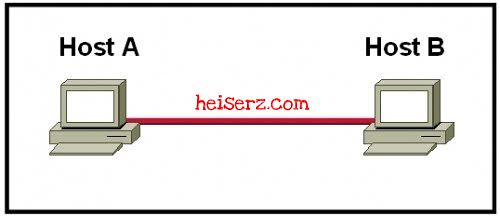
Refer to the exhibit. Which type of Category 5 cable is used to make an Ethernet connection between Host A and Host B?
coax cable
rollover cable
crossover cable
straight-through cable
11. In LAN installations where potential electrical hazards or electromagnetic interference may be present, what type of media is recommended for backbone cabling?
coax
fiber
Cat5e UTP
Cat6 UTP
STP
12. Which fiber connector supports full duplex Ethernet?

13. Which method of signal transmission uses radio waves to carry signals?
electrical
optical
wireless
acoustic
14. Which characteristics describe fiber optic cable? (Choose two.)
It is not affected by EMI or RFI.
Each pair of cables is wrapped in metallic foil.
It combines the technique of cancellation, shielding and twisting to protect data.
It has a maximum speed of 100 Mbps.
It is the most expensive type of LAN cabling.
15. Which of the following is a characteristic of single-mode fiber-optic cable?
generally uses LEDs as the light source
relatively larger core with multiple light paths
less expensive than multimode
generally uses lasers as the light source
16. What is considered a benefit of wireless as a media choice?
more host mobility
lower security risks
reduced susceptibility to interference
less impact of the surroundings on the effective coverage area
17. Compared with UTP cable, what extra characteristic of STP cable helps reduce the effects of interference?
the metal braiding in the shielding
the reflective cladding around core
the twisting of the wires in the cable
the insulating material in the outer jacket
18. What is a primary role of the Physical layer in transmitting data on the network?
create the signals that represent the bits in each frame on to the media
provide physical addressing to the devices
determine the path packets take through the network
control data access to the media
19. When is a rollover cable used in a network?
for connecting a host to a Fast Ethernet port on a switch
for connecting a router to another router
for connecting two routers through their AUX ports
for connecting to a switch through its console port
20. What is a purpose of the physical layer in data communication?
to wrap data packets into frames
to make sure that MAC addresses are unique in each frame
to control the access sequence of frames to the transmission media
to convert a frame into a series of signals to be transmitted on the local media
21. Which data communications standard provides broadband access in a wireless network?
GSM
Wi-Fi
WiMAX
Bluetooth
22. A customer installs a wireless access point at home in the closet next to the kitchen. The customer mentions that the wireless communication performance seems degraded when the cordless phone or the microwave oven is in use. What is the possible reason for this degradation?
The access point is close to walls.
The cordless phone joins the WLAN and shares the available bandwidth.
The wireless signal is in the same radio frequency range as the household devices are in.
The access point is on the same electrical circuit as the phone base unit and microwave oven are.
The surge of electricity when a microwave oven is in use disrupts the operation of the access point.
23.
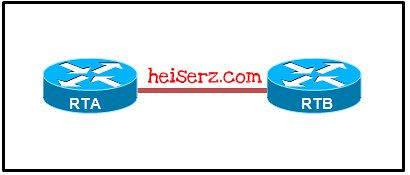
Refer to the exhibit. Which type of Category 5 cable is used to make an Ethernet connection between router RTA and router RTB?
coax cable
rollover cable
crossover cable
straight-through cable
24. Which OSI layer is responsible for managing optical signals used for data communication?
presentation
data link
transport
physical
25. Which connector is used with twisted-pair cabling in an Ethernet LAN?
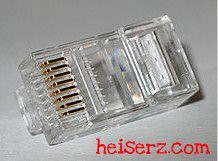
backbone cable
horizontal cable
patch cable
work area cable
2. In most business LANs, which connector is used with twisted-pair networking cable?
BNC
RJ-11
RJ-45
Type F
3. When is a straight-through cable used in a network?
when connecting a router through the console port
when connecting one switch to another switch
when connecting a host to a switch
when connecting a router to another router
4. With the use of unshielded twisted-pair copper wire in a network, what causes crosstalk within the cable pairs?
the magnetic field around the adjacent pairs of wire
the use of braided wire to shield the adjacent wire pairs
the reflection of the electrical wave back from the far end of the cable
the collision caused by two nodes trying to use the media simultaneously
5. Which OSI layer is responsible for binary transmission, cable specification, and physical aspects of network communication?
Presentation
Transport
Data Link
Physical
6. An installed fiber run can be checked for faults, integrity, and the performance of the media by using what device?
light injector
OTDR
TDR
multimeter
7. XYZ Company is installing new cable runs on their data network. What two types of cable would most commonly be used for new runs? (Choose two.)
coax
Cat4 UTP
Cat5 UTP
Cat6 UTP
STP
8. What is a possible effect of improperly applying a connector to a network cable?
Data will be forwarded to the wrong node.
Data transmitted through that cable may experience signal loss.
An improper signaling method will be implemented for data transmitted on that cable.
The encoding method for data sent on that cable will change to compensate for the improper connection.
9. What are three measures of data transfer? (Choose three.)
goodput
frequency
amplitude
throughput
crosstalk
bandwidth
10.

Refer to the exhibit. Which type of Category 5 cable is used to make an Ethernet connection between Host A and Host B?
coax cable
rollover cable
crossover cable
straight-through cable
11. In LAN installations where potential electrical hazards or electromagnetic interference may be present, what type of media is recommended for backbone cabling?
coax
fiber
Cat5e UTP
Cat6 UTP
STP
12. Which fiber connector supports full duplex Ethernet?

13. Which method of signal transmission uses radio waves to carry signals?
electrical
optical
wireless
acoustic
14. Which characteristics describe fiber optic cable? (Choose two.)
It is not affected by EMI or RFI.
Each pair of cables is wrapped in metallic foil.
It combines the technique of cancellation, shielding and twisting to protect data.
It has a maximum speed of 100 Mbps.
It is the most expensive type of LAN cabling.
15. Which of the following is a characteristic of single-mode fiber-optic cable?
generally uses LEDs as the light source
relatively larger core with multiple light paths
less expensive than multimode
generally uses lasers as the light source
16. What is considered a benefit of wireless as a media choice?
more host mobility
lower security risks
reduced susceptibility to interference
less impact of the surroundings on the effective coverage area
17. Compared with UTP cable, what extra characteristic of STP cable helps reduce the effects of interference?
the metal braiding in the shielding
the reflective cladding around core
the twisting of the wires in the cable
the insulating material in the outer jacket
18. What is a primary role of the Physical layer in transmitting data on the network?
create the signals that represent the bits in each frame on to the media
provide physical addressing to the devices
determine the path packets take through the network
control data access to the media
19. When is a rollover cable used in a network?
for connecting a host to a Fast Ethernet port on a switch
for connecting a router to another router
for connecting two routers through their AUX ports
for connecting to a switch through its console port
20. What is a purpose of the physical layer in data communication?
to wrap data packets into frames
to make sure that MAC addresses are unique in each frame
to control the access sequence of frames to the transmission media
to convert a frame into a series of signals to be transmitted on the local media
21. Which data communications standard provides broadband access in a wireless network?
GSM
Wi-Fi
WiMAX
Bluetooth
22. A customer installs a wireless access point at home in the closet next to the kitchen. The customer mentions that the wireless communication performance seems degraded when the cordless phone or the microwave oven is in use. What is the possible reason for this degradation?
The access point is close to walls.
The cordless phone joins the WLAN and shares the available bandwidth.
The wireless signal is in the same radio frequency range as the household devices are in.
The access point is on the same electrical circuit as the phone base unit and microwave oven are.
The surge of electricity when a microwave oven is in use disrupts the operation of the access point.
23.

Refer to the exhibit. Which type of Category 5 cable is used to make an Ethernet connection between router RTA and router RTB?
coax cable
rollover cable
crossover cable
straight-through cable
24. Which OSI layer is responsible for managing optical signals used for data communication?
presentation
data link
transport
physical
25. Which connector is used with twisted-pair cabling in an Ethernet LAN?

source : http://heiserz.com
Final Exam CCNA 1 Chapter 7
Diposting oleh
Abhee
Label:
Cisco CCNA
/
Comments: (0)
1. Which options are properties of contention-based media access for a shared media? (Choose three.)
non-deterministic
less overhead
one station transmits at a time
collisions exist
devices must wait their turn
token passing
2. What is a primary purpose of encapsulating packets into frames?
provide routes across the internetwork
format the data for presentation to the user
facilitate the entry and exit of data on media
identify the services to which transported data is associated
3.

Refer to the exhibit. How many unique CRC calculations will take place as traffic routes from the PC to the laptop?
1
2
4
8
16
4. What is true concerning physical and logical topologies?
The logical topology is always the same as the physical topology.
Physical topologies are concerned with how a network transfers frames.
Physical signal paths are defined by Data Link layer protocols.
Logical topologies consist of virtual connections between nodes.
5.

Refer to the exhibit. Assuming that the network in the exhibit is converged meaning the routing tables and ARP tables are complete, which MAC address will Host A place in the destination address field of Ethernet frames destined for http://www.server?
00-1c-41-ab-c0-00
00-0c-85-cf-65-c0
00-0c-85-cf-65-c1
00-12-3f-32-05-af
6. What are three characteristics of valid Ethernet Layer 2 addresses? (Choose three.)
They are 48 binary bits in length.
They are considered physical addresses.
They are generally represented in hexadecimal format.
They consist of four eight-bit octets of binary numbers.
They are used to determine the data path through the network.
They must be changed when an Ethernet device is added or moved within the network.
7.
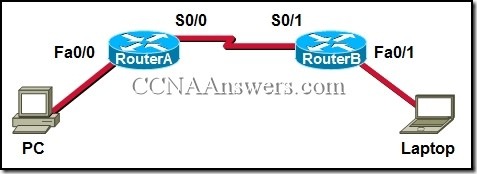
Refer to the exhibit. A frame is being sent from the PC to the laptop. Which source MAC and IP addresses will be included in the frame as it leaves RouterB? (Choose two.)
source MAC – PC
source MAC – S0/0 on RouterA
source MAC – Fa0/1 on RouterB
source IP – PC
source IP – S0/0 on RouterA
source IP – Fa0/1 of RouterB
8. What determines the method of media access control? (Choose two.)
network layer addressing
media sharing
application processes
logical topology
intermediary device function
9. What is the purpose of the preamble in an Ethernet frame?
is used as a pad for data
identifies the source address
identifies the destination address
marks the end of timing information
**is used for timing synchronization with alternating patterns of ones and zeros
10. What statements are true regarding addresses found at each layer of the OSI model? (Choose two.)
Layer 2 may identify devices by a physical address burned into the network card
Layer 2 identifies the applications that are communicating
Layer 3 represents a hierarchical addressing scheme
Layer 4 directs communication to the proper destination network
Layer 4 addresses are used by intermediary devices to forward data
11. Which statements describe the logical token-passing topology? (Choose two.)
Network usage is on a first come, first serve basis.
Computers are allowed to transmit data only when they possess a token.
Data from a host is received by all other hosts.
Electronic tokens are passed sequentially to each other.
Token passing networks have problems with high collision rates.
12. Which sublayer of the data link layer prepares a signal to be transmitted at the physical layer?
LLC
MAC
HDLC
NIC
13. What is true regarding media access control? (Choose three.)
Ethernet utilizes CSMA/CD
defined as placement of data frames on the media
contention-based access is also known as deterministic
802.11 utilizes CSMA/CD
Data Link layer protocols define the rules for access to different media
controlled access contains data collisions
14. What is a characteristic of a logical point-to-point topology?
The nodes are physically connected.
The physical arrangement of the nodes is restricted.
The media access control protocol can be very simple.
The data link layer protocol used over the link requires a large frame header.
15. What two facts are true when a device is moved from one network or subnet to another? (Choose two.)
The Layer 2 address must be reassigned.
The default gateway address should not be changed.
The device will still operate at the same Layer 2 address.
Applications and services will need additional port numbers assigned.
The Layer 3 address must be reassigned to allow communications to the new network.
16. What is a function of the data link layer?
provides the formatting of data
provides end-to-end delivery of data between hosts
provides delivery of data between two applications
provides for the exchange data over a common local media
17. Which three factors should be considered when implementing a Layer 2 protocol in a network? (Choose three.)
the Layer 3 protocol selected
the geographic scope of the network
the PDU defined by the transport layer
the physical layer implementation
the number of hosts to be interconnected
18. What is the primary purpose of the trailer in a data link layer frame?
define the logical topology
provide media access control
support frame error detection
carry routing information for the frame
19. A network administrator has been asked to provide a graphic representation of exactly where the company network wiring and equipment are located in the building. What is this type of drawing?
logical topology
physical topology
cable path
wiring grid
access topology
20.
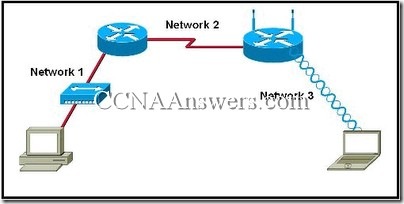
Refer to the exhibit. Which statement describes the media access control methods that are used by the networks in the exhibit?
All three networks use CSMA/CA
None of the networks require media access control.
Network 1 uses CSMA/CD and Network 3 uses CSMA/CA.
Network 1 uses CSMA/CA and Network 2 uses CSMA/CD.
Network 2 uses CSMA/CA and Network 3 uses CSMA/CD.
non-deterministic
less overhead
one station transmits at a time
collisions exist
devices must wait their turn
token passing
2. What is a primary purpose of encapsulating packets into frames?
provide routes across the internetwork
format the data for presentation to the user
facilitate the entry and exit of data on media
identify the services to which transported data is associated
3.

Refer to the exhibit. How many unique CRC calculations will take place as traffic routes from the PC to the laptop?
1
2
4
8
16
4. What is true concerning physical and logical topologies?
The logical topology is always the same as the physical topology.
Physical topologies are concerned with how a network transfers frames.
Physical signal paths are defined by Data Link layer protocols.
Logical topologies consist of virtual connections between nodes.
5.

Refer to the exhibit. Assuming that the network in the exhibit is converged meaning the routing tables and ARP tables are complete, which MAC address will Host A place in the destination address field of Ethernet frames destined for http://www.server?
00-1c-41-ab-c0-00
00-0c-85-cf-65-c0
00-0c-85-cf-65-c1
00-12-3f-32-05-af
6. What are three characteristics of valid Ethernet Layer 2 addresses? (Choose three.)
They are 48 binary bits in length.
They are considered physical addresses.
They are generally represented in hexadecimal format.
They consist of four eight-bit octets of binary numbers.
They are used to determine the data path through the network.
They must be changed when an Ethernet device is added or moved within the network.
7.

Refer to the exhibit. A frame is being sent from the PC to the laptop. Which source MAC and IP addresses will be included in the frame as it leaves RouterB? (Choose two.)
source MAC – PC
source MAC – S0/0 on RouterA
source MAC – Fa0/1 on RouterB
source IP – PC
source IP – S0/0 on RouterA
source IP – Fa0/1 of RouterB
8. What determines the method of media access control? (Choose two.)
network layer addressing
media sharing
application processes
logical topology
intermediary device function
9. What is the purpose of the preamble in an Ethernet frame?
is used as a pad for data
identifies the source address
identifies the destination address
marks the end of timing information
**is used for timing synchronization with alternating patterns of ones and zeros
10. What statements are true regarding addresses found at each layer of the OSI model? (Choose two.)
Layer 2 may identify devices by a physical address burned into the network card
Layer 2 identifies the applications that are communicating
Layer 3 represents a hierarchical addressing scheme
Layer 4 directs communication to the proper destination network
Layer 4 addresses are used by intermediary devices to forward data
11. Which statements describe the logical token-passing topology? (Choose two.)
Network usage is on a first come, first serve basis.
Computers are allowed to transmit data only when they possess a token.
Data from a host is received by all other hosts.
Electronic tokens are passed sequentially to each other.
Token passing networks have problems with high collision rates.
12. Which sublayer of the data link layer prepares a signal to be transmitted at the physical layer?
LLC
MAC
HDLC
NIC
13. What is true regarding media access control? (Choose three.)
Ethernet utilizes CSMA/CD
defined as placement of data frames on the media
contention-based access is also known as deterministic
802.11 utilizes CSMA/CD
Data Link layer protocols define the rules for access to different media
controlled access contains data collisions
14. What is a characteristic of a logical point-to-point topology?
The nodes are physically connected.
The physical arrangement of the nodes is restricted.
The media access control protocol can be very simple.
The data link layer protocol used over the link requires a large frame header.
15. What two facts are true when a device is moved from one network or subnet to another? (Choose two.)
The Layer 2 address must be reassigned.
The default gateway address should not be changed.
The device will still operate at the same Layer 2 address.
Applications and services will need additional port numbers assigned.
The Layer 3 address must be reassigned to allow communications to the new network.
16. What is a function of the data link layer?
provides the formatting of data
provides end-to-end delivery of data between hosts
provides delivery of data between two applications
provides for the exchange data over a common local media
17. Which three factors should be considered when implementing a Layer 2 protocol in a network? (Choose three.)
the Layer 3 protocol selected
the geographic scope of the network
the PDU defined by the transport layer
the physical layer implementation
the number of hosts to be interconnected
18. What is the primary purpose of the trailer in a data link layer frame?
define the logical topology
provide media access control
support frame error detection
carry routing information for the frame
19. A network administrator has been asked to provide a graphic representation of exactly where the company network wiring and equipment are located in the building. What is this type of drawing?
logical topology
physical topology
cable path
wiring grid
access topology
20.

Refer to the exhibit. Which statement describes the media access control methods that are used by the networks in the exhibit?
All three networks use CSMA/CA
None of the networks require media access control.
Network 1 uses CSMA/CD and Network 3 uses CSMA/CA.
Network 1 uses CSMA/CA and Network 2 uses CSMA/CD.
Network 2 uses CSMA/CA and Network 3 uses CSMA/CD.
source : http://ccnaanswers.com
Profil
Materi
- Chord Lagu Barat (2)
- Chord Lagu Indo (15)
- Cisco CCNA (5)
- Download (1)
- Photoshop (9)
- Tips (14)
- Tugas (12)
Artikel
Link Campus
Jaringan Blog Teman
BHIM ISLAND PRODUCTION
BHIM ISLAND is proudly powered by Abhee mataow - 2009
Blogger Templates created by Deluxe Templates
BHIM ISLAND is proudly powered by Abhee mataow - 2009
Blogger Templates created by Deluxe Templates




